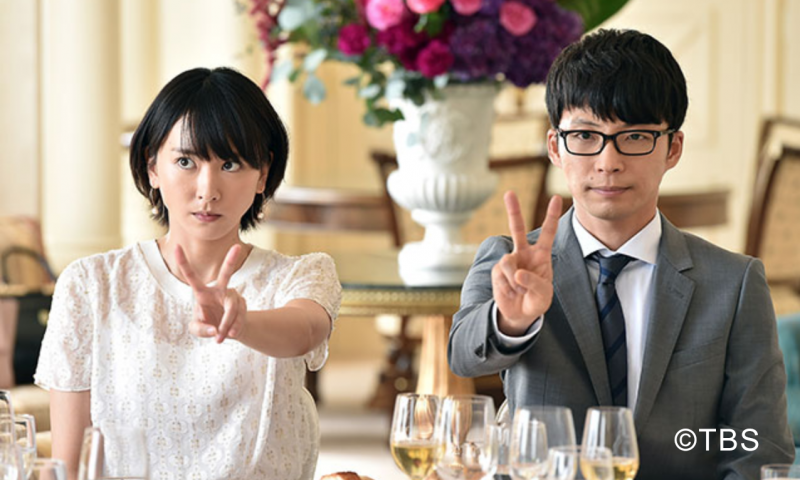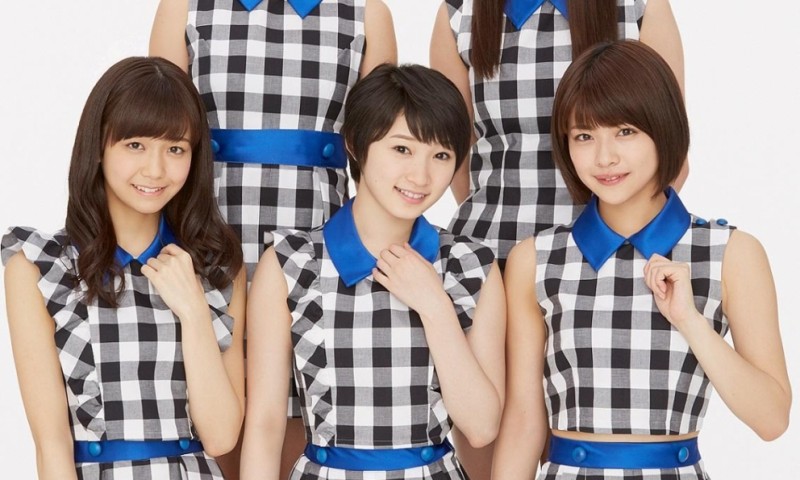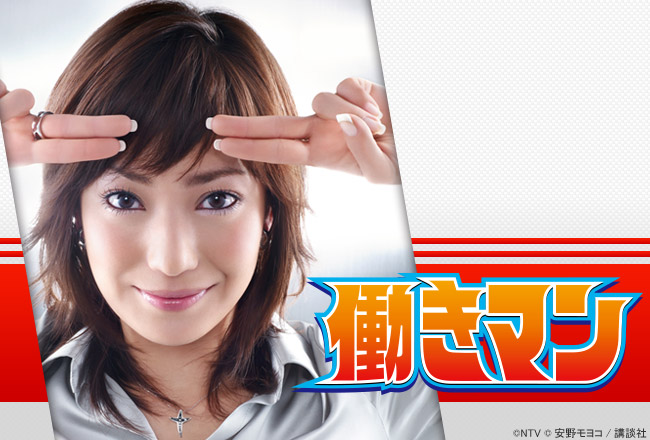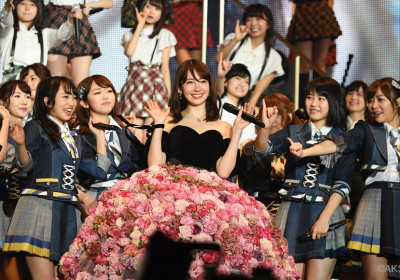
Dine Like a Star: 5 Cafes in Tokyo From Your Favorite Japanese Dramas


Sponsored Links
It seems as though that there are more popular TV dramas portraying working women in Japan, and I take this as a great cultural progress. Some of its have made it to popular series, because of its dramatic depiction has struck accord with the real ones, who are working hard as much in the real world. These series are dedicated to those hard-working women in Japan, trying to overcome not only with their jobs that they had to deal with, but also with rooted, male atmosphere at the workplace. And by watching these series, it make these female audiences to energize for their tomorrow.
Some of the most popular drama series in the late 1990s were about working women in a tough workplaces. These women were still represented with the typical “female jobs,” but still respected because of their contribution of their hard work. For example, “Naasu no Oshigoto” (1996, 1997, 2000, 2003) or “Nurse’s Work” starring Arisa Mizuki and Yuki Matsushita was a hit and continued to five series and a movie. Rather than serious, medical drama like “ER,” or romantic story like “Grey’s Anatomy,” this series is a comedy with touching stories about what it is like to work as a nurse in a big hospital.
Another hit series in the late 1990s were “Shomuni” (1998, 2000, 2002, 2003, 2013) making it with four seasonal series and three special programs. Starring Makiko Esumi as the leader-like worker at “Shomu 2-ka” or the general affairs section in a trading company. With five other unique, female workers at general affairs section, they have encountered with other department’s workers and battle within, because of unfair treatment and judgement towards their section and towards the female workers themselves. Their blue, OL (Office Lady) uniform with short skirt in high-heels became iconic image, which shows that women at the workplace can also look beautiful and be proud of their work, than just being passive tea-server.
Even during this time, it was more prominent that many of the female workers depicted with uniforms, like the nurse’s uniform and OL’s uniform. It could be said that this time still had the gendered bias of types of work. But in the 2000s, there have been more new types of work, and having more women working as hard as men, in order to survive in the male-dominant workplace.
During this time, there were some social issues regarding irregular workforce, like temporary or contracted workers, also-known-as, the “outsourceable” workers. The “Haken No Hinkaku” or “The Dignitiy of Temp Workers” (2007) starring Ryoko Shinohara, have been popular series taking on this social issue of female, temp worker, and their situation of how they are being treated in the company. These temp workers are needed because the company has so many jobs that needs to be done, and as a result, these temp workers end up working as much as full time workers, with lower pay and without any welfares. But the temp workers are seen as lower worker compared with full-time worker, because they work by shifts, and unlike full-time workers at a company, they’re not contributing to the company directly. And this TV drama has become a hit and made audiences aware that these temp workers, that they do work as much as the full-time workers, but also lives precariously, fearing whether they will have a next job to earn money for the next day. Which deals with the bigger question, “Do you live to work or work to live?”
“Hataraki-man” is also about the hard-working women who work as much as men. The protagonist, Hiroko Matsukata, starring Miho Kanno, working as an editor at weekly magazine, running around to cover and interview scandals of corrupted politicians and celebrities. The job is tough, both physically and mentally for women. But Hiroko calls it as “otoko suicchi,” or “man mode,” when she is working as much as her male co-workers. Because she is dedicated to her job, she also has the troubles losing touch with her boyfriend and also fighting against the stereotypical female roles in the workplace. Not only Hiroko, but the story also depicts her both male and female workers at the magazine (with monologue), how they work and their own philosophy towards what it means to work for each and one of them. The original manga series were written by Moyoko Anno, and this series have turned in to anime before the drama series as well.
Surely, these series have proved that women can work as hard as men, and they become stronger and better as they are, but there’s also the downside or the “other side” of what they have sacrificed, and “Hataraki-man” portrayed that side realistically. And yet, another comedic series also portrayed that part of hard-working women. The term “Himono-onna” or “Dried-fish women” became a buzz from this series, “Hotaru no hikari (Light of the Fireflies)” (2007, 2010, 2012) starring Haruka Ayase.
Haruka Ayase plays as a young, beautiful, and hard-working woman at a workplace, but right after she gets home, she changes in to lazy, couch potato with alcohol in one hand, and comic book in the other. “Himono-onna” became a buzzword that many of the women face the similar situation with the protagonist in “Hotaru no hikari.” Another characteristic of “himono-onna” in this series, was that the protagonist hasn’t been in relationship so long that she is so “dried up.” Even with this characteristic, the term “himono-onna” struck accord with many of the females in Japan, and it has become the top-10 in the “Buzzword of the Year” in 2007.
We are now aware that women do work as much and hard as the men can. Then what can we say about the current depiction of working women?
One of my favorite recent drama series would be “FIRST CLASS,”(2014) starring Erika Sawajiri, making a great comeback to the television with this series. Not only her, but Nanao was also spotlighted with her “natural” bitch-acting she had done, when the viewers were all left to believe that it was her true side. The series had some thematic overlaps with “The Devil Wears Prada,” a dull girl working at a fashion magazine, but “FIRST CLASS” also put in the core theme of where many of the females face, the “Mounting” or competition and hierarchy of women according to their attractiveness and background. (Review about “mounting joshi” from this article: (https://tokyogirlsupdate.com/mounting-joshi-culture-20160176741.html )
Not only “FIRST CLASS,” there are many series and movies that depicts women working in the fashion industry, with the theme of female rivalry. But not only in fashion industry, it also happens at any kind of workplace, there’s always some conflicts and dramas behind the human relationship, and not just between man and woman, but also within the women is somewhat complicating and difficult to manage.
It seems as though there are more unique, maybe even peculiar female worker. Not only that, their passion for their job is also present. In 2016, there were full of these interesting female workers portrayed in television dramas. Keiko Kitagawa starred in the series, “Women who sell houses (Ie uru onna),” a cold-hearted realtor who will do anything to sell a house or room and always succeeds in doing so. Satomi Ishihara acted as a passionate, fashion-loving female who dreamed of working at a fashion magazine at a big publishing company, but ended up being at a dull, “proof-reading department” or “koetsu,” where she also found a passion of that department’s work in the drama, “Simply, Amazing! Koetsu (Proofreeder) Girl (Jimi ni Sugoi! Koetsu Garu).” And the biggest hit series in 2016 was, “Nigeru wa haji daga yaku ni tatsu (We Married As a Job!)” which depicted and struck accord with the younger generation’s perspective about work and marriage.
Marrying as a Job? Popularity Behind TV Drama “Nigeru wa Haji da ga Yaku ni Tatsu”
Not to mention, the “koi” dance also became viral, where many of the idols, celebrities, and even Sanrio characters danced to.
Surely, the situation has become better for female workers, but still, there are rooted, stereotypes of what types of jobs that women should work for, how the women are treated at the workplace, and how women are seen as a worker. These TV dramas not only shows the realistic depiction of women in the workplace, but also empowers these women for their tomorrow, to let them know that they’re not alone struggling with these issues.
Sponsored Links

Kojimatsuri Day 1! The Emotional Eve of Haruna Kojima’s Graduation Concert!

Risa Satosaki Reveals Everything in the MV for “S!NG”!

